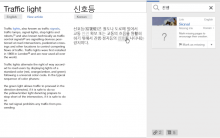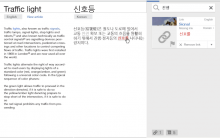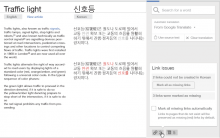Context
Links on the source that do not exist on the target language are just added to the translation as plain text. We could better indicate such circumstance and allow users to decide whether to keep them as red-links, or plain text.
Narrative
As a user, I can keep source links as red links, so that they will become blue links when the lacking article is created.
Acceptance Criteria
- Links that cannot be adapted will be represented in gray with a dashed underline.
- The dashed underline will only appear for the links on the current paragraph. Links from other paragraphs will not show the dashed underline to avoid too much visual noise.
- Users selecting them will have an option to turn them into red links from the link card ("mark as missing" option).
- Links marked as missing will be represented as red links.
- The link card will present the red link, by clicking on it, Content Translation will be opened in a new window to create the corresponding translation for the missing link.
- A tooltip "translate (in new window)" will be shown on hover.
- Once a link is marked as missing, the link card will provide an option to "remove link" in order to revert the action.
Design Notes
The UI suggests the user to mark as missing links those that could not be adapted:
Once a red link is created, an option is provided to revert it. In addition, it can be used as an entry point to create a new translation:
Warning indicators at the bottom, provides awareness of different issues and options to deal with them:





